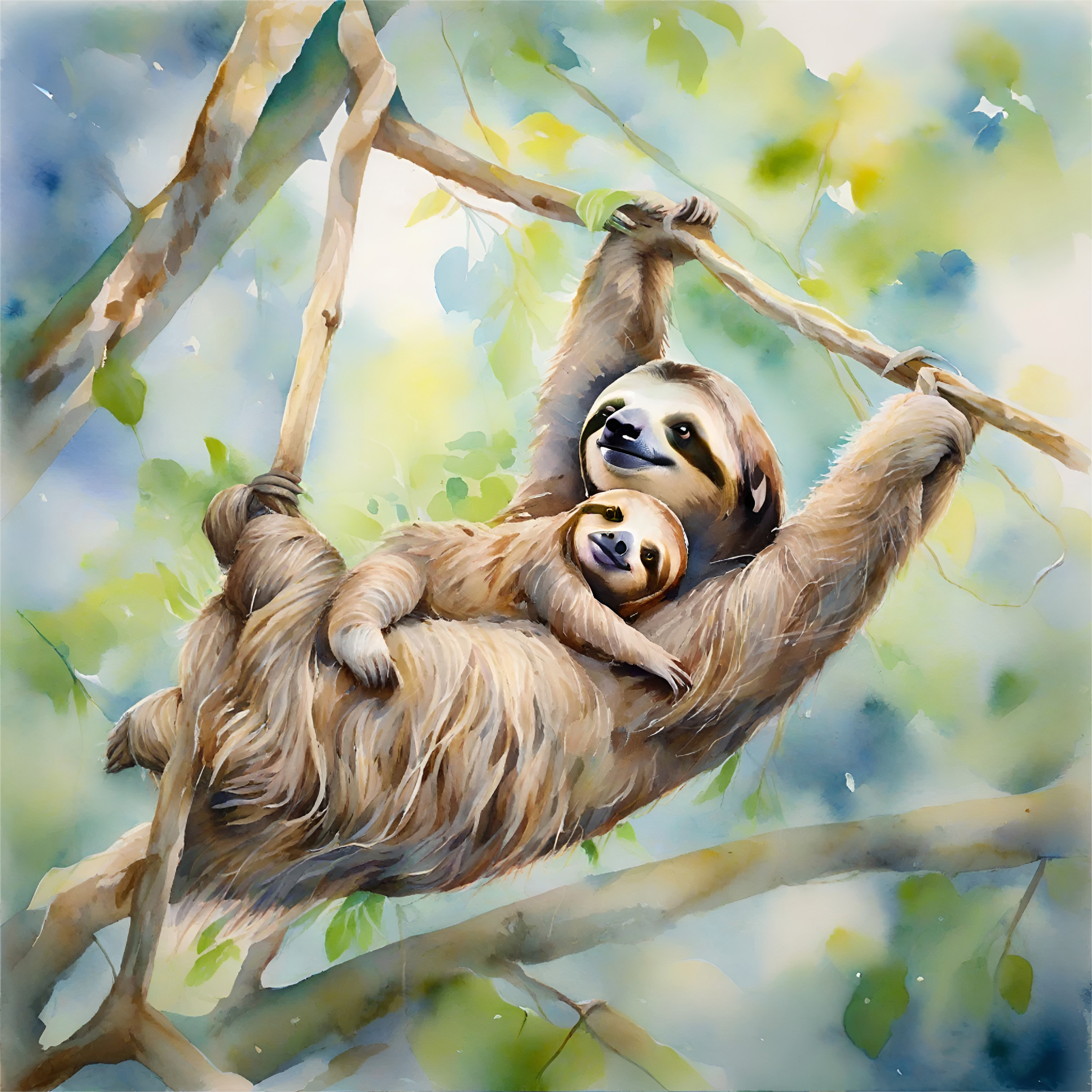Cost Rica
Sloth Conservationist
Growing up in Manchester, England, Rebecca Cliffe, like many young women of her generation, loved her hair straighteners, high-heeled shoes, and fashionable handbags. While studying for her degree at university, one of her professors mentioned an overseas sloth research opportunity. Rebecca wondered what on earth a sloth was. She turned to Google for answers and devoured every piece of information she could find about these mysterious creatures. She sailed through the interview, and within three weeks, the 18-year-old was on a one-way flight to Costa Rica.

Rebecca worked and stayed at a sloth rescue centre for the first twelve months. In the six years that followed, she ventured deep into the Costa Rican rainforests, living a solitary existence as she followed sloths around in an attempt to gain first-hand knowledge of their behavior and ecology. She started to understand sloths not just as a species but as individuals with distinct personalities and preferences. This helped expand the scientific community’s knowledge of sloths and highlighted the urgent need for their conservation.
Rebecca then pursued a PhD in sloth ecology and conservation, intending to translate her newly acquired knowledge into action to empower both people and sloths to coexist harmoniously. In 2017, she founded the Sloth Conservation Foundation, which bears the tagline: saving the planet’s slowest mammal in a quickly changing world.

Indeed, one of the biggest threats to sloths is the pace at which our world is changing. They can’t run, they can’t jump, they can’t fly, and their languid movement is reliant on interconnected tree canopies for survival. However, human activities have disrupted this essential habitat continuity.
When we encroach upon their habitats, one of our initial actions is to chop down trees to make room for construction. This breaks up the canopies that sloths rely on for movement. Our power cables pose a lethal threat, electrocuting sloths as they unwittingly climb them. Sloths face further danger from our roads, often falling victim to collisions with vehicles. In matters tourism, sloths are removed from the wild and sold as props for selfies.


In the face of these multifaceted threats, these incredibly peaceful and vulnerable species can’t defend themselves. They are being decimated in huge numbers.
Aside from groundbreaking research that aims to ensure that sloths continue to thrive alongside humans, Rebecca and her team conducted the first-ever census on sloth populations. Their biggest win has been the Connected Gardens Project, which encourages individuals to make their land wildlife-friendly and interconnected by providing safe pathways for sloths. They do this through planting trees and constructing wildlife bridges. Sloth Conservation Foundation has connected over 1,000 individually owned properties as corridors not just sloths but also monkeys, tree frogs and other species.


In a rapidly changing world where sloths face silent suffering, Rebecca and her team have raised their voices to ensure the planet’s slowest mammal can survive.


Sloths are considered indicator species, meaning their population health reflects the overall health of their ecosystem. If we can create an environment where sloths thrive alongside humans in a mutually beneficial way, then other species will thrive, too.
As prey for predators like jaguars and large birds of prey, sloths also contribute to the balance of relationships in their ecosystems. A decline in sloth populations can disrupt this balance, leading to cascading effects throughout the food chain. Losing sloths is a sign of a much larger problem; it means the survival of other species is also in question.

Consider these tips:
Personal
Whether you’ve got a cozy apartment balcony or a sprawling garden, you can turn your outdoor space into a wildlife hotspot. If you’re working with a balcony, think about using pots and hanging baskets to grow native plants that attract pollinators like bees and butterflies. Toss in a bird feeder or a birdbath to keep our feathered friends happy and hydrated. Remember to go vertical with some climbing plants to maximize your space!
Now, if you’ve got yourself a garden, it’s time to get creative. Mix things up with a variety of trees, shrubs, and flowers to support a range of wildlife. A small pond will provide them with drinking and bathing spots. Set up nesting sites like bird boxes and insect hotels to give them shelter as they raise their young. Leave a few spots in your garden a bit messy with stuff like leaf litter, tall grasses, and fallen logs. This might look wild, but it’s prime real estate for insects and amphibians!
By making a few simple tweaks to your outdoor space, you’re not just creating a chill hangout for yourself—you’re also rolling out the welcome mat for your local critter crew. It’s a win-win for all!
Community
Rebecca and her team’s connected gardens concept highlights the importance of community engagement and cooperation in conservation efforts. It is proof that by working together, we can make a significant difference in the protection of our natural world.
Start by scouting out spots where wildlife corridors could be set up, like along fences or between properties. Then, gather your neighbors and get planting! Focus on native trees, shrubs, and flowers that provide food and shelter for local critters. Get creative with solutions like green roofs or living walls on buildings to create smaller wildlife corridors. When you connect gardens in your community like this, you’re essentially building superhighways for biodiversity, giving animals more room to roam and thrive.
Share Your Ideas
Share your ideas:
We would love to hear from you! What are some of the ways in which you have turned your outdoor space into a wildlife hotspot? Please send them to engage@daughtersforearth.org. You can support all Daughters by visiting our website and becoming part of the solution here.



 Donate
Donate
